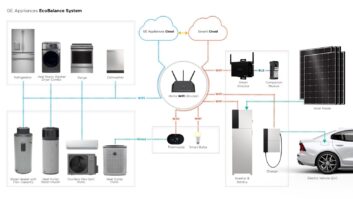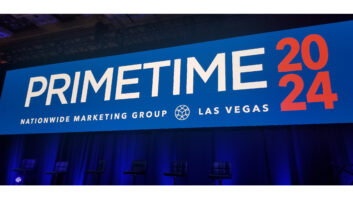Washington — Speakers at the Consumer Electronic Association’s (CEA) Washington Forum Thursday had differing opinions on a proposal to use a percentage of extra funds that will be freed up after the DTV transition to further consumer education and assist with equipment setup and operation for those who require it.
The proposal, which was championed by U.S. Rep. Richard Boucher (D-Va.) and discussed again here Thursday during his keynote address, proved less than popular with some Forum attendees and participants, including Gary Shapiro, CEA president/CEO.
Boucher acknowledged the intent of some of the public service advertising being conducted by broadcasters and cable operators to alert consumers to the pending switch to digital TV, but added, “I appreciate what those two industries are doing, but candidly let me say that some of that advertising is just a tad self-serving and may not be as fully informative as we need for it to be. There’s time, and hopefully it will get better as it goes, but I also think we are going to need some more federal support for public education.”
Boucher pointed to efforts undertaken in England to inform and prepare its citizens for that country’s transition to digital broadcasting, including a budget of $600 million for a public education campaign, compared with the $5 million allocated for the U.S. education effort. In addition, he said, England encountered issues that this country hasn’t even considered, including the fact that 10 percent of existing outdoor antennas had to be replaced to receive new digital broadcasts.
“We have no funding in our federal program to replace those antennas,” Boucher pointed out.
During another keynote address, Shapiro asked acting National Telecommunications and Information Association (NTIA) director Meredith Baker, who is heading up some of the U.S. education efforts, if she thought Boucher’s proposal was necessary.
“The answer is no,” Baker said. “I think this has worked out well. Everyone has really stepped up, and everyone is educating consumers as they need to. We have trusted third-party intermediaries who are valuable partners.”
Baker said the English DTV preparation model Boucher has pointed to used $3.5 billion from a television opportunities fund, “but that money came from a television tax, and we don’t want to see a television tax in the United States, do we?”
A number of audience members shouted, “No!”
“We are working with other valuable partners to be able to do the same thing. I don’t think we need more money. I think we need everybody to step up and continue to do the great work that they are doing,” Baker said.
Shapiro replied, “May I say that that was a great answer? We need a television tax like we need a queen.”
In a panel discussion on multi-industry preparation efforts for the DTV transition, CEA industry affairs senior VP Jason Oxman shared results from a CEA market research study conducted at the end of January that found 11 percent of households currently rely solely on over-the-air broadcasting. That translates into 12.5 million households in the United States, he said. Some 6.8 million homes subscribing to cable and satellite TV services also have an over-the-air television, he added.
“We are talking about a universe of about 300 million television sets in the marketplace today,” said Oxman, calling the number of over-the-air sets “a relatively small but important constituency.”
“Not all of these 12.5 million over-the-air households will actually need or want a digital television converter box. Some will buy digital televisions, some will subscribe to cable or satellite. Indeed, our survey found that 12 percent of over-the-air households plan to buy a digital television in order to enjoy digital broadcasts in advance of the DTV transition in February of 2009.”
Other findings from the CEA survey showed that 7 percent of those households will subscribe to a pay-TV service for the first time and 21 percent will do nothing, because the analog televisions in their homes aren’t used to watch over-the-air broadcasting. Instead they are hooked up to video games or VCRs.
Regarding converter boxes, the CEA survey found that 48 percent of over-the-air consumers plan to buy a DTV converter box and use it with their current television and current over-the-air antenna, Oxman said.
“What this means in practice is that even if every single one of the 12.5 million over-the-air households orders a maximum of two coupons from the NTIA to use to purchase DTV converter boxes, there would be sufficient coupons under the NTIA program to meet demand,” Oxman said. “Even if you added in all of the households that reported to us in our survey that they also have an over-the-air television in their cable or satellite enabled home, we would still have enough in the coupon program as currently constituted to meet the demand.”
Oxman noted that the CEA understands the DTV transition is “not going to happen overnight,” adding that it has been working for over a decade to educate consumers about digital television. Last year, he observed, the industry passed an important milestone when total DTV penetration reached over half of all U.S. households.
This year the CEA forecasts another 30 million digital televisions to ship into the market, and when consumers make the decision to go digital over 75 percent opt for high-definition televisions.
“People are excited. They are aware of the new technology and they are aware of the transition,” Oxman declared.
Going forward, Oxman said the CEA will continue with the next wave of multi-industry consumer outreach efforts to ensure that come Feb. 17, 2009, no one will lose television reception because they were unaware of the transition to digital broadcasting.
As part of that effort, the CEA unveiled its “Convert Your Mom” outreach effort in advance of mothers’ day, targeting seniors with information about the DTV transition. The effort will use TV star Florence Henderson, who played mother Carol Brady in the classic TV sitcom “The Brady Bunch,” to appeal to aging consumers and baby boomers.
The CEA will also add a “digitaltips.org” consumer Web site offering a digital tip guide and other interactive elements about the transition in coming weeks.
Speaking in a panel discussion during the event, Tony Wilhelm, NTIA consumer education and public information director on the TV converter coupon program, said that his agency recently began an “Experience the Benefits” campaign, which reached out to consumers with information on the transition at RadioShack store No. 1 in Fort Worth, Texas.
The program was designed to provide “useful information” to help consumers understand why the transition is happening and to help them prepare for it.
“Once consumers understand that there are critical economic and security issues for why this transition is happening, they are more receptive to the activities they need to do to make this happen in their household,” Wilhelm said. “This isn’t something the government is doing arbitrarily. There are fundamental reasons why this is happening and making that known really helps with the transition.”
The effort also helps consumers realize “that they can begin enjoying the benefits of digital immediately. They can plug in that converter box today and begin enjoying the benefits of digital television,” he said.
Additionally, Wilhelm said that all of the industries working on the cooperative DTV education efforts are contributing many millions of dollars worth of air time, advertising and support efforts that don’t take any money from the $5 million allocated for DTV educations.
The NTIA’s consumer education strategy uses a three-pronged approach developed with the help of IBM, which was contracted to help administer the coupon distribution and outreach effort from a consumer-centric perspective.
The strategy involved using focus groups to develop information materials that could be distributed to the public over the www.dtv2009.gov consumer site. The administration is also actively soliciting news stories in the media on the transition, and it is using partners to develop viral campaigns and local activities to spread the word.
“This isn’t your typical government assistance program” Wilhelm said. “It takes about 90 seconds to get a government benefit. That’s a pretty good proposition.”












